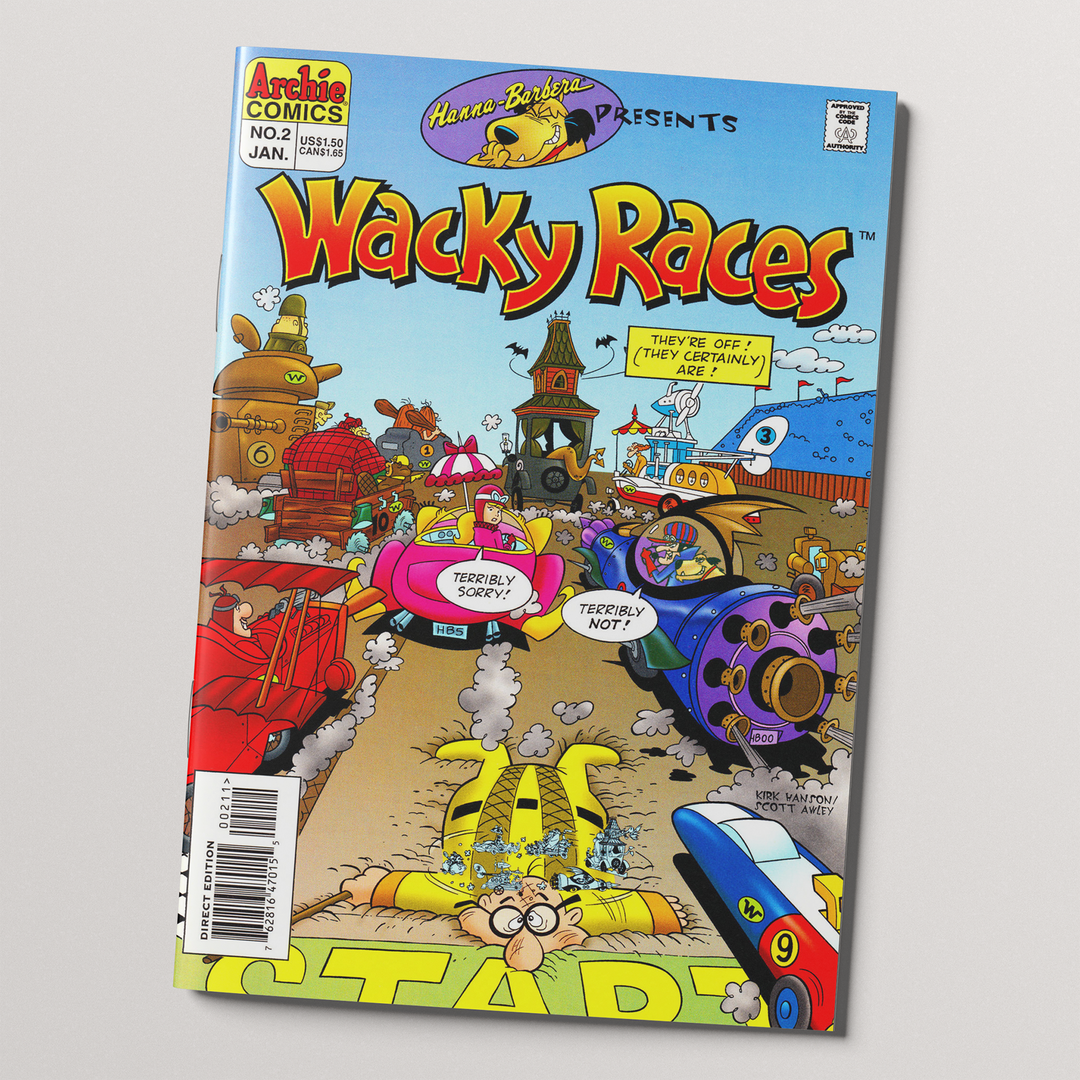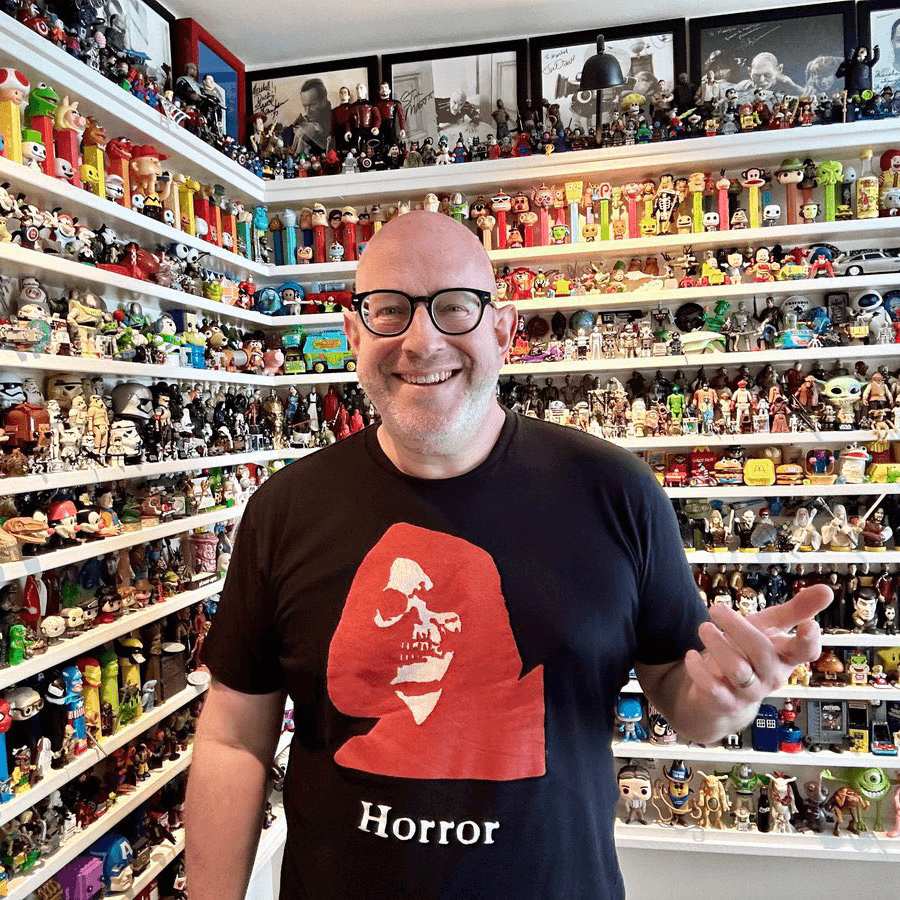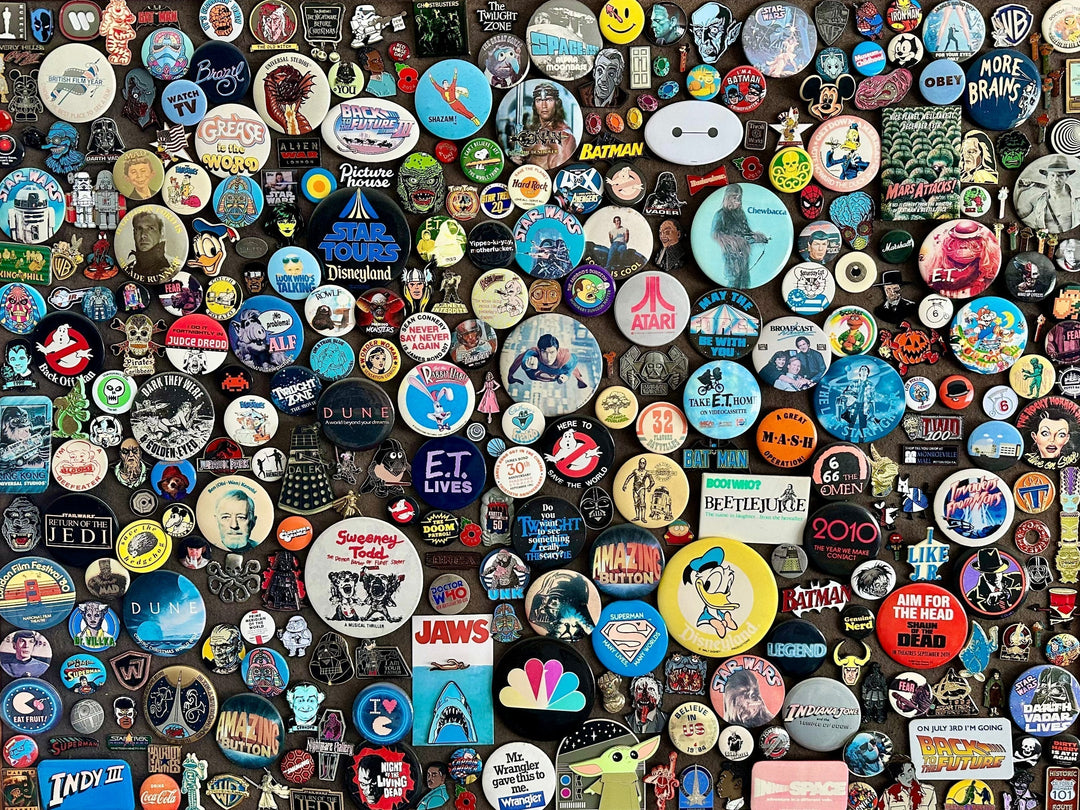
Test Your Hanna-Barbera IQ!
Author: Marshall Julius
From 1940 until 1957, animation legends William Hanna and Joseph Barbera – Bill and Joe to us – produced 114 flawlessly executed and shinily beautiful Tom and Jerry shorts for Metro-Goldwyn-Mayer. Winning seven Academy Awards for their painstaking efforts, not to mention untold legions of lifelong fans, they were ultimately rewarded for their diligence and craft with unemployment: Once the bean counters at MGM realised that re-releasing old Tom and Jerry cartoons was no less profitable than distributing new ones, they promptly closed the studio’s animation wing and Bill and Joe were suddenly out on their ears.
With help from their director pal George Sidney, who in 1945 had enlisted Jerry Mouse to dance alongside Gene Kelly in Anchors Aweigh, Bill and Joe immediately took charge of their own destinies by forming Hanna-Barbera Productions in 1957. Producing cartoons exclusively for the small screen, they quickly dominated the market, and by the Sixties were responsible for 80% of all children’s programming, cranking out up to six hours of entertainment every single week.
Contrary to their extravagant Tom and Jerry style, Bill and Joe worked fast and cheap for TV, pioneering a technique that came to be known as Limited Animation. Using “fewer drawings,” explained Hanna, it “required less inking and painting, less camera work, less of everything, in fact, except background art.” Less focused on action than snappy dialogue, often scenes required just a character’s mouth and eyes to be animated, and in close-up too, which meant even less to draw.
Regardless of these drastically cut corners, and Hanna-Barbera’s willingness to recycle show ideas, plots, characters and dialogue for series after series, for more than three decades the company’s cartoons charmed audiences worldwide, earning record-breaking ratings and a respectable eight Emmys.
In addition to their live-action and feature-length efforts, Hanna-Barbera produced more than 3000 animated half-hours for television. They were the shows we’d rush home from school to watch every afternoon. The cartoons we’d wake up early to see every Saturday morning - surely the most sacred TV time of the week. How close did you pay attention, though? It’s time to find out…
QUESTIONS
1. They would have gotten away with it too, if it weren’t for what?
2. When visiting Jellystone Park, what must you keep your eye on at all times?
3. What are the names of the cats in T.C.'s gang?
4. What was Touché Turtle’s catchphrase?
5. What was Hanna-Barbera’s first prime time animated series?
6. How, in 1957, did Bill Hanna and Joe Barbera decide who’d come first in their new company name?
7. Four banana three banana two banana one,
All bananas playing in the bright warm sun.
Flipping like a pancake popping like a cork…
8. Which Hanna-Barbera production was the first TV show broadcast in colour on ABC-TV?
9. Which long-running Eighties’ ‘toon was based on a comic strip by Belgian cartoonist Pierre "Peyo" Culliford?
10. Who never won a single Wacky Race and what was their atrocious auto?
11. What were Clyde, Dum Dum, Pockets, Snoozy, Softy, Yak Yak and Zippy collectively known as, and which two shows did they feature in?
12. What song inspired CBS's head of daytime programming, Fred Silverman, to christen Hanna-Barbera’s Greatest Dane, Scooby-Doo?
13. Who’s got style, a groovy style, and a car that just won’t stop?
14. Why did the BBC rename Top Cat a month into the show’s 1962 UK TV debut, and what did they call it instead?
15. What was unusual about the tandem motorbike ridden by the Hair Bear Bunch?

16. Superman, Wonder Woman, Aquaman, Batman and Robin assembled in 1973 to form which team for Hanna-Barbera?
17. "The problem with the show was simply this: When they start telling you in Standards and Practices, 'Don't shoot any flame at anybody, don't step on any buildings or cars,' then pretty soon, they've taken away all the stuff he represents.” What show is Joe Barbera describing here?
18. What are the full names of those four meddling teens and their cowardly Great Dane?
19. Which troubled superstar gave Joe Barbera an autographed photo of himself with the inscription, "To my hero of yesterday, today, and tomorrow, with many thanks for all the many cartoon friends you gave me as a child. They were all I had.”
20. What phrase would Bez The Beast (Henry Corden) have to incant if he wanted to shapeshift into, say, an elephant, in Arabian Knights (1968-1969)?
A QUICK MESSAGE FROM OUR SPONSOR
Before skipping down to the answers, please take a moment to sign up to our newsletter so we can keep you apprised of new drops, exclusive offers and fresh Blog Goblin fun. If it's Hanna-Barbera merch you seek, we've got you! Sign up today and you'll be the first to hear about everything we produce from Scooby Doo-Pins to Wacky Races model kits and more.
[klaviyo_form id="TZpPQK"]
ANSWERS
1. Those meddling kids! (Scooby-Doo, Where Are You! 1969-1970)
2. Your pic-a-nic basket! (The Yogi Bear Show, 1961-1962)
3. Top Cat’s (Arnold Stang) crew was Benny the Ball (Maurice Gosfield), Choo-Choo (Marvin Kaplan), Fancy-Fancy (John Stephenson), Brain and Spook (both voiced by Leo De Lyon). (Top Cat, 1961-1962)
4. "Touché away!" (Touché Turtle and Dum Dum, 1962-1963)
5. The Flintstones (1960-1966)
6. A coin toss!
7. Fleagle, Bingo, Drooper and Snork! (The Banana Splits Adventure Hour, 1968-1970)
8. The Jetsons (1962-1963), though in 1962 only 3% of the US public owned colour televisions.
9. The Smurfs (1981-1989). Peyo’s original strip debuted in 1958 in the Belgian magazine Spirou.
10. Dick Dastardly (Paul Winchell) and Muttley (Don Messick), who drove The Mean Machine. (Wacky Races, 1968-1969)
11. The Ant Hill Mob starred first in Wacky Races (1968-1969) and later in spin-off series, The Perils of Penelope Pitstop (1969-1970).
12. A scat vocal at the end of Frank Sinatra’s 1966 hit, Strangers in the Night. Frank sang "doo-be-doo-be-doo" and Fred, on his way to a development meeting, had a bright idea. (Scooby-Doo, Where Are You! 1969-1970)
13. Hong Kong Phooey (1974)
14. As there was a popular British brand of cat food at the time called Top Cat, rather than run the risk of inadvertently promoting a product on the ad-free channel, the BBC renamed the series The Boss Cat, and later, simply, Boss Cat. (Top Cat, 1961-1962)
15. It was invisible. (Help!... It's the Hair Bear Bunch!, 1971-1972)
16. Super Friends
17. Godzilla (1978-1979)
18. Frederick Herman Jones, Daphne Blake, Velma Dinkley, Norville "Shaggy" Rogers and Scoobert "Scooby" Doo. (Scooby-Doo, Where Are You! 1969-1970)
19. Michael Jackson
20. “Size of an elephant!”

